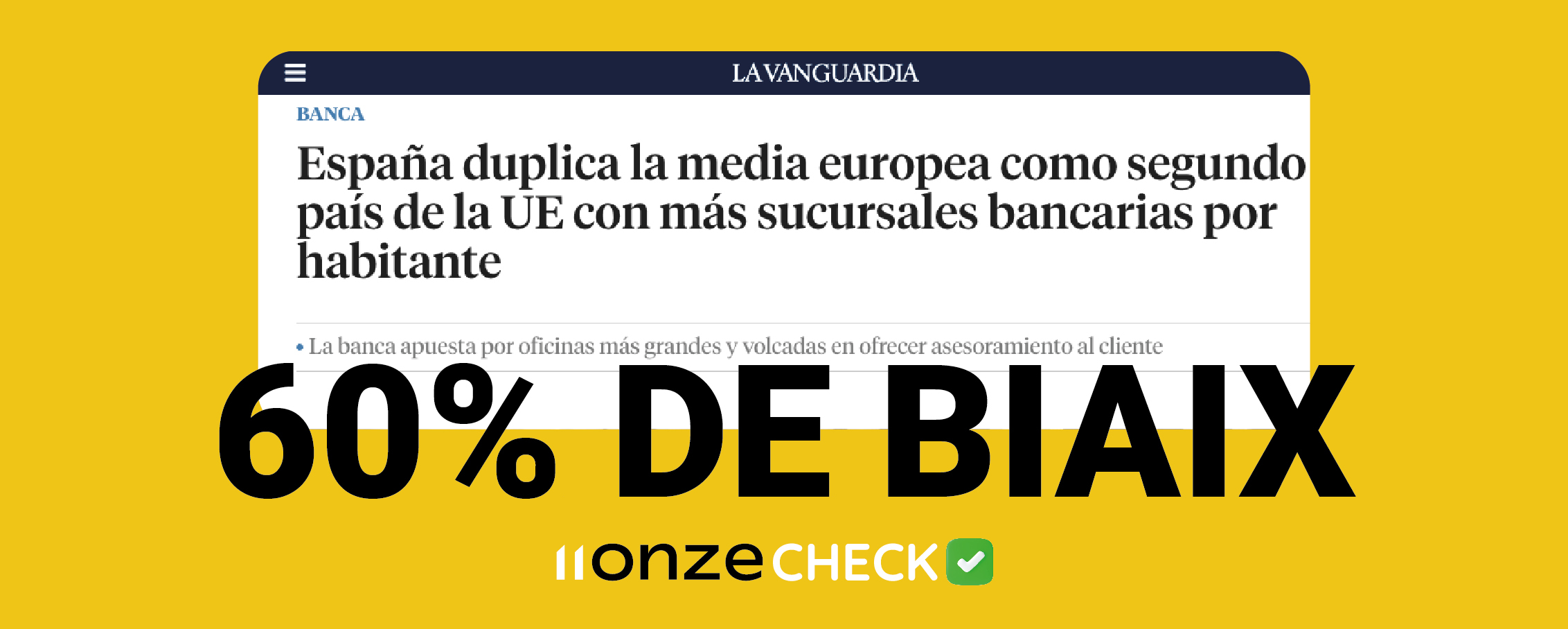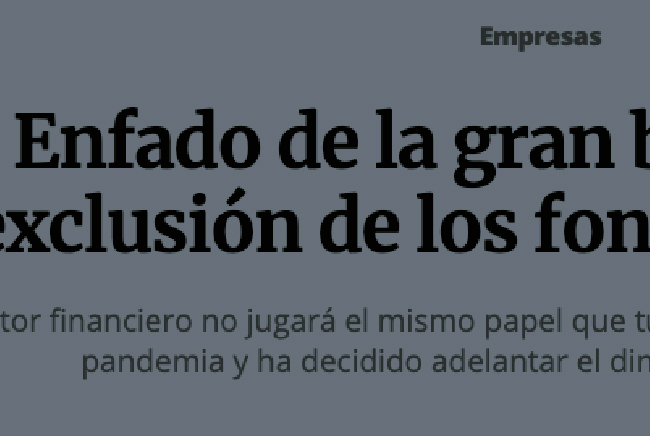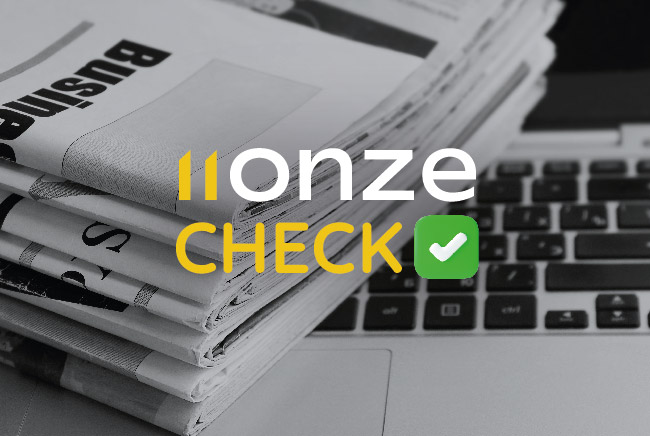

11Onze Check: bank branch cutbacks
The draconian closure of bank branches by Spanish banks has no end. The bank-friendly media, because they accept their advertising, justify it by explaining that the density of bank branches in Spain is well above the European average. But is this the only data we need to look at, or are there more factors to take into account? We analyse a news item from ‘La Vanguardia’ using the Bias Method.
Since 2007, more than half of the bank branches in Spain have been closed, a fact that aggravates the exclusion of rural areas and the elderly. The limited opening hours cause long queues in the morning to carry out basic formalities. Local councils are trying to find solutions with financial institutions. There is talk of alternatives, such as opening more ATMs in local shops, supermarkets, or shopping centres, and formulas to stop the degradation of closed branches and thus avoid disasters such as the one in the Plaza de Tetuán (Barcelona).
In addition to the massive closure of branches, there are record numbers of employee redundancies. Banks will close the year having dismissed 19,000 staff, at a cost of 4.8 billion euros. A figure that places Spanish banks well above the European average of customer-employee ratio, a fact that makes personalised customer service even more difficult, just when a new law is about to come into force that obliges banks to provide 24-hour customer service, and without the use of telephone robots.
At 11Onze Check we focus on the news item in ‘La Vanguardia’, or rather, on CaixaBank’s sponsored article – evidenced, in the print edition, by the heading “Special Pages”; and, in the digital edition, only inside the article, and not on the section page, by the logo of the financial institution, which is the one offering the content to readers – published a few days ago, where they explain the reasons behind this closure of branches, and the alternatives proposed by the banks.
Is this information unbiased? No, according to the 11Onze Check bias method, it has a 60% bias. We analyse it.
SOURCES
In the article, we find a series of assertions without information on where the data comes from. Certainly, in case of doubt, the reader can look for information on their own about the figures or statements published, but in an era in which knowing how to identify true news from disinformation is a necessity of the first order, it is necessary to give the sources the importance they deserve, especially when the origin of the information and its context are essential to determine the possible degree of bias in an article “Offered by CaixaBank”.
INTENT
The headline of the article states that “Spain doubles the European average as the second EU country with the most bank branches per inhabitant”. One might think that this is current news, but this data has been known for many years. A report by the European Central Bank (ECB) in 2016 already included this information, which was also published by the media.
Does this headline cover the main story, or does the banks’ justification for the massive closure of branches and the dismissal of workers replace the real headline? We can certainly conclude that there is an intention to give visibility to the banks’ point of view.
CONTEXT
The information is contextualised with the headline and the explanation of the trend of consumers to use telematic means to carry out their banking transactions. But key elements are missing because it focuses on the number of branches per inhabitant, not on the number of employees per customer. In this sense, the data are not favourable to banking, because we are far from the European average, and it will get even worse given the massive redundancies in the banking sector. No mention is made of this issue, which is undoubtedly relevant considering that the article analyses the impact that the closure of branches will have on customer service. The context is therefore unclear: are branches closing because there are masses of people, or are they closing because traditional banks are not sustainable?
COMMERCIAL MOTIVES
The headline of the article published on the ‘La Vanguardia’ website clearly shows that it is CaixaBank content, i.e. advertising content, but in the printed version of the newspaper it simply states that we are reading an article in one of the “Special pages”. But above all, on the front page of the Economy section, the content appears as another news item, without indicating that it is sponsored. This is a clear violation of the rights of the reader, who at the time could not know that it was advertising content from CaixaBank.
VAGUENESS
The information is rather foggy due to the constant changes of subject. It starts with an apparently newsworthy fact (the closure of branches, in this case justifying it), but soon the piece turns into a series of CaixaBank good news bulletin. They talk about their flagships, new services, ATMs… In short, they leave the main topic to include as much promotional content as possible.
VOCATION OF SERVICE
The content is clearly focused on the banking storyline, and there is an evident attempt to normalise the closure of branches and the queues in the street as inevitable. The public interest becomes secondary, or simply ignored in an almost sarcastic tone, when it is claimed that the closure of branches, “rationalisation”, of its network will improve the customer experience.
In conclusion, we can state that this information is 60% biased, and shows a decidedly biased view of circumstances that should be analysed accurately and honestly in the general interest.
To know more about the Bias Method we have used to contrast this information, you will find it here. If you would like to send us economic information to verify, you can do so by writing to [email protected].
11Onze is becoming a phenomenon as the first Fintech community in Catalonia. Now, it releases the first version of El Canut, the super app of 11Onze, for Android and Apple. El Canut, the first universal account can be opened in Catalan territory.







Gràcies per la informació👍
Gràcies a tu, Jordi, esperem que t’hagi agradat.
👏
Gràcies, Daniela!!!
👌
Gràcies, Joan!!!
No ens enganyem, fan el el han fet sempre, enganyar a la gent.
Salut i força al canut.
Tota la raó del món, Jesús Manel. Moltes gràcies pel teu comentari!!!
Els importa un rave les persones.
Cert, només ens volen pel seu negoci, i ara tots a córrer per tancar oficines bancàries per culpa dels costos que no poden mantenir. Moltes gràcies pel teu comentari, Joaquim!!!
Molt bon article, es evident que les grans entitats financeres, l’únic que buscant es el seu propi benefici, i no pas el del seu client que es el deuria de ser, simplement
Completament d’acord, Miguel. I precisament és aquest comportament inacceptable el que ha vingut a canviat 11Onze. Gràcies pel teu comentari!
Bon analisi
Gràcies per valorar-ho bé, Alícia!
Molt bon anàlisi
Moltes gràcies, Manuel!
Bon anàlisi
Gràcies, Laura pel teu comentari!
Mica en mica podrem interioritzar els objectes d’anàlisi per poder valorar el posible biaix de les notícies. Bon exemple
Doncs sí, és tal qual tu mateix dius… Moltes gràcies pel teu comentari, Francesc!!!
Molt bon anàlisi
Celebrem que t’hagi agradat, Ricard. Moltes gràcies pel teu comentari!!!
Ok 👍
Gràcies, Josep!!!
Molt bon anàlisi.
En el país del tot s´hi val i de les mitges veritats-on la banca és el rei- s’ agraeix.
De tot el que s’ analitza hi ha dos punts que trobo especialment greus en una informació. Que sigui un publireportatge camuflat I l`aparició de noticies antigues fent-les passar per actuals.
Gràcies pel teu comentari Mercè, ens veiem per La Plaça